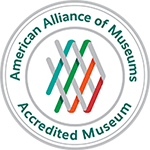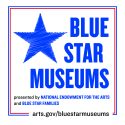We explore in this post, the family, friends, education, and art of Thomas Eakins in relationship to his social contexts and highlight key events and paintings. As many readers know, Cedarhurst cares for four paintings by Eakins — Samuel Murray, 1889; Professor Barker, 1886 (and the excised canvas fragment of Barker’s hand turned into a separate painting); and Eakins’ beloved sister Margaret, 1871.

Thomas Eakins, Margaret, 1871, oil, 18×15″, Gift of John R. and Eleanor R. Mitchell, 1973.1.17
Today, Eakins stands with America’s best painters of the 19th century who was also the century’s best art teacher. Eakins is highly regarded for his ability to capture in paint the psychology of both men and women. Rembrandt and Velázquez had this ability.
Known today for his portraits, he sold very few paintings in his lifetime. It is said that all his paintings are portraits in some form or another. Also praised for his outdoor scenes, especially his rowing depictions. His colors (blacks, browns, and tans) were a problem for some, not colorful enough, and his paintings not “modern” enough. Eakins had no interest in the contemporary art of his times (Courbet, Manet, or Impressionism). In 1864, Manet had just debuted Olympia and was the talk of the town. Though Eakins was in Paris in 1865, he remained an iconoclast interested only in painting what he saw in real life. He cared next to nothing for the smooth neoclassical style or the bombastic romantic style. Thomas Eakins danced to a different beat.
Eakins was smart, wealthy, single-minded, with no political or social ambitions. An excellent student, he excelled at art and science. Eakins may have been bipolar; fought depression every day of his life. Sexual identity ambiguity and family tragedy (deaths of mother and sister Margaret; suicide of a niece) also haunted his life.
Nonetheless, young Tom and his father, Benjamin hunted together, sailed, and bicycled. Tom loved rowing. The elder Eakins had amassed a fortune that would keep Eakins and his wife Susan Macdowell Eakins in good stead the rest of their lives.
Married to Susan Macdowell for 32 years. She was a former student and they cared deeply for each other. After Eakins died, Susan worked tirelessly to see that her husband was recognized by the major museums, especially the Metropolitan Museum of Art.
Supremely gifted, Eakins always knew he wanted to be an artist, and unconventionally, his father supported and encouraged his son in this pursuit.
Young Eakins attended one of the leading schools in the country, Philadelphia’s Central High School where only 1% of potential grammar school graduates were accepted. He was interested in painting, anatomy, medicine, physics, and sports. Eakins had a lifelong fascination with science. He gave the scientific address at graduation in 1861.
Eakins developed fluency in French and six more languages—Italian, Spanish, German, Greek, Latin, English. Also knew sign language. His command of French allowed him to navigate past the bureaucracy guarding admittance to Ecole des Beaux-Arts in Paris.
Eakins sailed the Atlantic to Paris in 1866 to pursue his dream to study at the Ecole des Beaux-Arts with the most celebrated art teacher of the time, Jean-Léon Gérôme. Mary Cassatt also studied with Gérôme. In France, Eakins kept a journal in French and returning home, for a time, wrote letters to friends in French. While in Paris, Eakins also studied with Léon Bonnat, a portrait painter. Bonnat advised Eakins to visit Spain and especially the Prado, where Eakins fell in love with paintings by Diego Velázquez. The Prado and Velázquez had a tremendously positive effect on Eakins’ thinking as to what painting could be.
During Eakins’ lifetime, the Second Industrial Revolution nicknamed the Gilded Age began to thrive. The last decades of the 19th century and the first two of the 20th century were times of great economic achievement for the United States. It rapidly became the most industrious and wealthiest nation in the world.
The pace of the world was noticeably accelerating with the inventions of trains, the automobile, the airplane, telegraph, telephone, the camera, light bulb, movies, typewriter, cash register, and time clock. Eakins was one of the first painters to use a camera in making art. Eakins met motion photographer Eadweard Muybridge at the University of Pennsylvania. Eakins was an integral part of the University’s grand experiments, serving on committees, and there he perfected his own photographic invention—the wheel camera—that photographed human movement with one camera.
Significantly, the Gilded Age saw the rise of the professional class, especially in the science and medical professions. Sports were becoming popular as a middle class way to relax. In 1871 Eakins painted Max Schmitt in a Single Shell. In 1875, Eakins painted The (Dr. Samuel) Gross Clinic considered by many to be his greatest painting. At the time, surgical teams still wore business suits. People despised the painting considering it to have too much blood and shock value.
Eakins’ late 19th century world was quickly becoming modernized and his paintings responded to social and cultural innovations.
In an infamous incident, in 1886, Eakins was fired from the Pennsylvania Academy of Fine Art where he taught. During a figure drawing class, he removed the loincloth from the male model in order to further a point on musculature. Immediately afterwards, 54 students petitioned to have him reinstated. Within ten days Eakins’ dismissal, 30 of his students set up, on their own, an Art Students League with Eakins as the sole instructor.


Thomas Eakins, Professor Barker’s Hand, 1886, oil, 15×12″ (reduced), Gift of Mr. and Mrs. S. Alden Perrine, 1973.6.1
Thomas Eakins, Professor George F. Barker, 1886, oil, 24×20″ (reduced from original 60×40″), Gift of Mr. and Mrs. S. Alden Perrine, 1973.6.1
Professor George F. Barker was painted the year of the dismissal. A well-regarded physicist and chemist, Barker was a friend and colleague of Thomas Edison. Originally, Eakins painted his dear friend Barker as a three-quarter body-length portrait, not the head-only portrait we exhibit today. Remarking on the psychological identity of the hand, Eakins said, “a hand takes as long to paint as a head; and a man’s hand looks no more like another man’s hand than a head looks like another’s.”
In 1885, Samuel Murray was an art student of Eakins at the Art Student League. Eakins painted the Cedarhurst Samuel Murray in 1889. Murray was 25 years Eakins’ junior and they were inseparable in the 1890s. They went to boxing matches, rode bikes together, and made pilgrimages to Walt Whitman. Murray was at his friend’s bedside when Eakins died in 1916.
 Thomas Eakins, Thomas Murray, 1889, oil, 24×20″, Gift of John R. and Eleanor R, Mitchell, 1973.1.16
Thomas Eakins, Thomas Murray, 1889, oil, 24×20″, Gift of John R. and Eleanor R, Mitchell, 1973.1.16
Since his death, Thomas Eakins has been favorably compared to his contemporaries Henry David Thoreau and Walt Whitman. These American thinkers contributed enduring principles towards Eakins’ own philosophical outlook.
Whitman (1819-1892) asserted in his poetry the beauty of the human body, physical health, and sexuality. Whitman’s poetry broke new ground as it moved away from traditional verse to everyday cadence. Whitman was world-famous as people from all over the world visited him in Camden, New Jersey. Eakins met Walt Whitman in 1887. They became friends and enjoyed many talks together. Eakins was a Whitman pallbearer, and he and Samuel Murray made the death mask of their friend.
Thoreau (1817-1862) was an exponent of Transcendentalism which espoused the essential unity of all creation, the innate goodness of humankind, and trusted insight and experience over logic. America’s Hudson River School painters owed a debt to this worldview.
Thoreau’s Walden is considered a philosophical treatise on labor, leisure, self-reliance, individualism, and our connection to nature. Thoreau’s themes—the value in the beauty of the human body, the unity of creation, self-reliance, and individualism suffused the values of Thomas Eakins who lived from 1844 to 1916.
Thomas Eakins and his legacy had a tremendous impact on Robert Henri and his Ashcan painters. George Bellows with fellow members of the Ashcan School started an American Revolution freeing artists to paint what they wished, much beyond what the Academy sanctioned. They—and in many ways following Eakins—chose Everyday Life.
George Bellows observed: Eakins’ 1917 Metropolitan retrospective “proves him to be one of the best of all the world’s masters. The greatest one man show I’ve seen and some of the very greatest pictures.”





